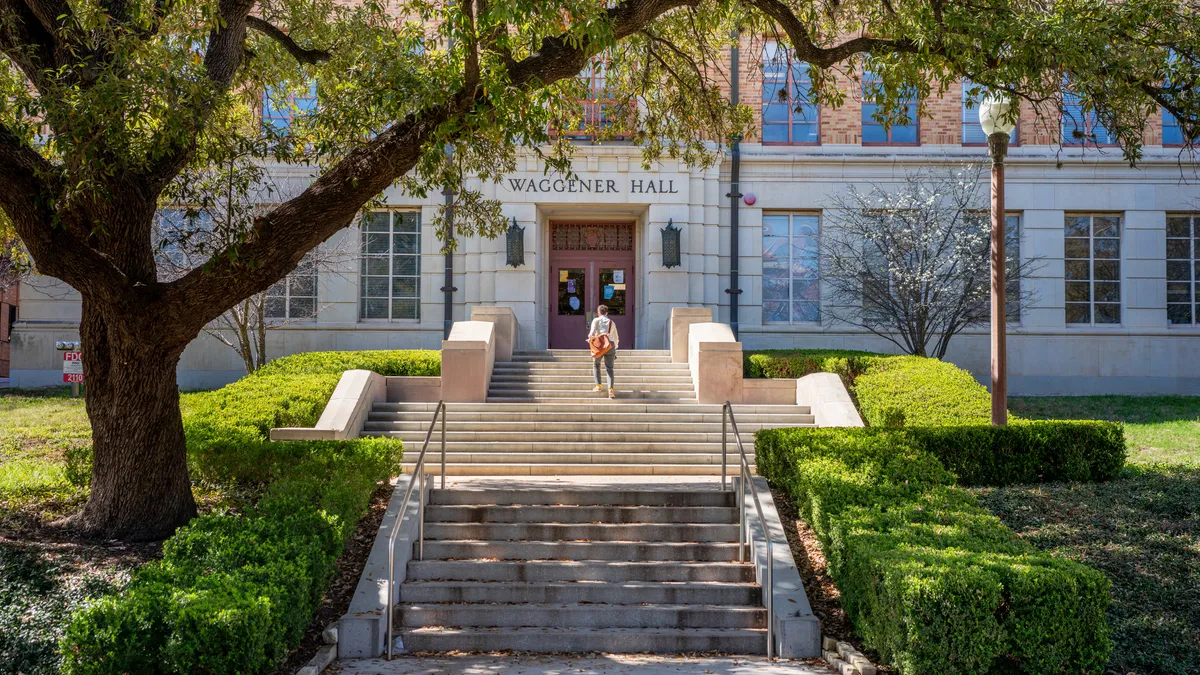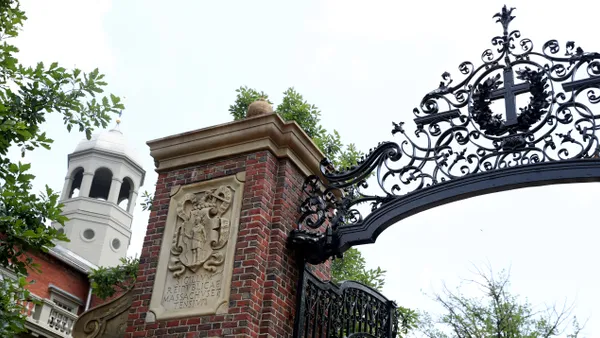Dive Brief:
- Enrollment of first-year students grew 5.5% in fall 2024 compared to the year before, representing an increase of about 130,000 students, according to a final tally from the National Student Clearinghouse Research Center.
- The figure is a striking reversal from the clearinghouse’s preliminary findings in October, which erroneously reported a decline in first-year students. Earlier this month, the clearinghouse said the early data contained a research error and suspended its preliminary enrollment reports, which use different methodologies to determine first-year student counts than the research center’s reports on final enrollment figures.
- College enrollment overall grew 4.5% in fall 2024 compared to the year before, according to the final data, rebounding to levels seen before the coronavirus pandemic caused widespread declines.
Dive Insight:
The new data is promising for higher education institutions, many of which have weathered steep enrollment declines in the wake of the pandemic.
“It is encouraging to see the total number of postsecondary students rising above the pre-pandemic level for the first time this fall,” Doug Shapiro, the research center’s executive director, said in a Wednesday statement.
Undergraduate enrollment surged 4.7% this fall, representing an increase of about 716,000 students. Graduate enrollment likewise spiked 3.3%, representing an uptick of about 100,000 students.
All sectors enjoyed enrollment increases. For-profit, four-year institutions had the largest enrollment growth, with headcounts rising 7.5% in fall 2024 compared to the year before. Public two-year institutions and public primarily associate-degree granting baccalaureate institutions, or PABs, saw similar levels of growth — 5.8% and 6.3%, respectively.
Enrollment also increased at four-year nonprofits. Overall headcounts grew 3.8% at private colleges and 3.1% at public institutions.
Older students largely drove the growth in first-year students. Enrollment of first-year students from ages 21 to 24 surged 16.7% in fall 2024, while headcounts of students 25 and older spiked by a whopping 19.7%.
Enrollment of younger first-year students also increased, though the growth was more muted.
Headcounts of 18-year-old students grew 3.4%. However, this group of first-year students has still not recovered to pre-pandemic levels, Shapiro said in a statement.
Similarly, enrollment of first-year students ages 19 to 20 increased 4.5%.
Two-year public colleges and public PABs enjoyed strong increases in their first-year student population, with 6.8% and 8.4% growth, respectively. However, for-profit, four-year colleges saw the largest increase, 26.1%, according to the new data.
Headcounts of first-year students also spiked at four-year nonprofits, rising 3.3% at public institutions and 2.8% at private colleges.
Shapiro addressed the research center’s methodological error during a call Wednesday with reporters. The erroneous preliminary report found that first-year enrollment had declined by 5% — over 10 percentage points lower than what the final data showed.
“I think our sensitivity to abnormally large changes was somewhat reduced because we had a host of kind of ready explanations for why we might be seeing these declines,” Shapiro said, citing issues with the federal student aid form, growing concerns with student debt and changes in the labor market.
The research center staff has been investigating its other publications to see if the issue crept into them.
So far, they discovered that the flawed methodology also impacted a February 2024 report on transfer students. The clearinghouse will correct that data when it issues its next transfer report in February.
The research center previously announced that the error affected other reports in its “Stay Informed” series, which shares preliminary enrollment data. It has halted those reports — which launched at the height of the pandemic — until it vets a new methodology.














